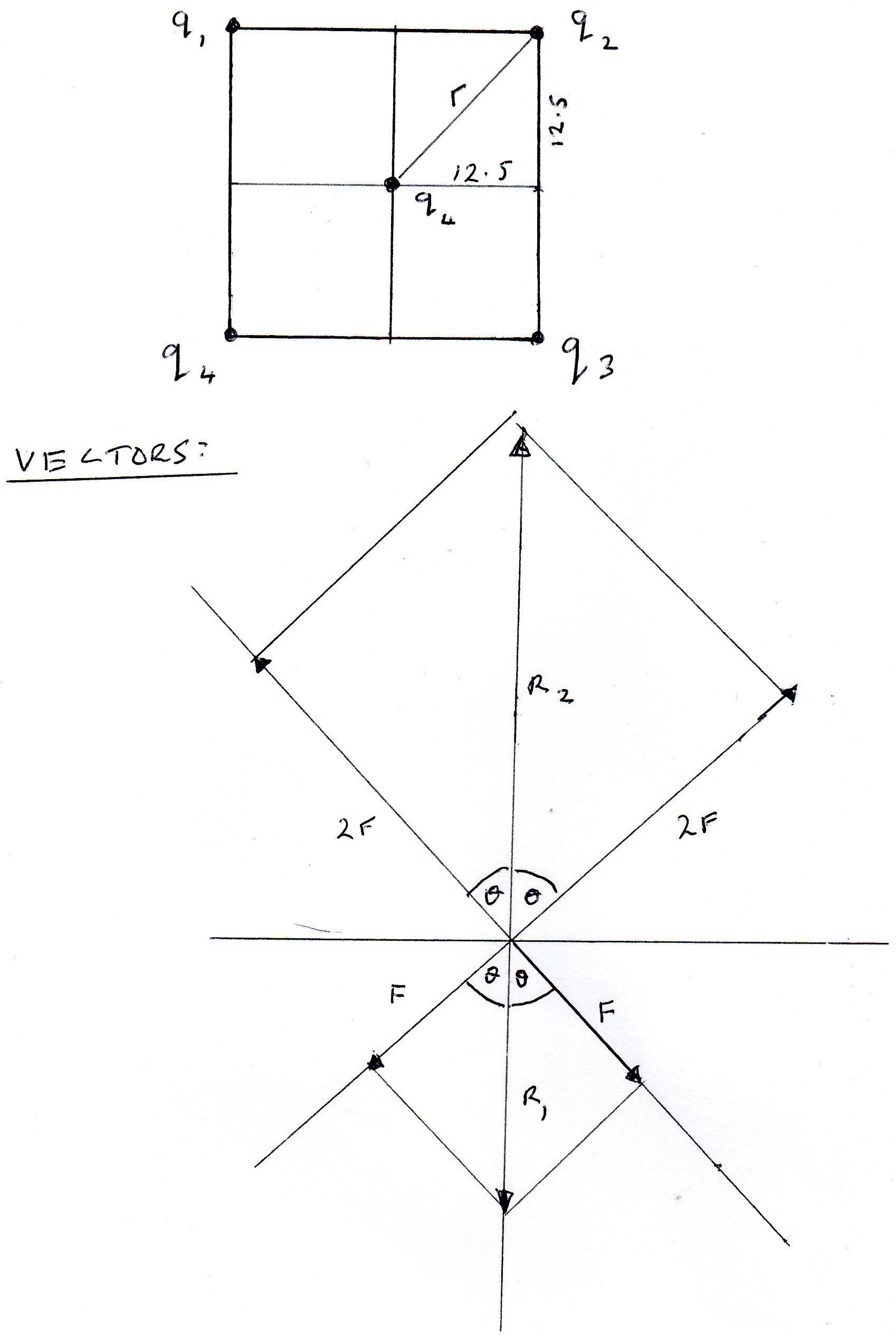Question #40d8e
2 Answers
Explanation:
We use Coulomb's Law to get the magnitude of the forces:
Where
Then we find the vector sum of the 4 forces.
Here is the situation:

To keep things simple I'll set
I'll set
You can see from the geometry that
So resolving:
From the geometry we get:
0,4073 N at angle 90 degrees. (ie. along positive y-axis)
[This is assuming the square is set up as I did in my sketch].
Explanation:
0,4073 N at angle 90 degrees. (ie. along positive y-axis)
[This is assuming the square is set up as I did in my sketch].
Note: The question does not say on which corners of the square the respective charges are placed. If the like magnitude charges are placed at opposite corners, then the resultant force on the centre charge would simply be zero by cancellation and symmetry.
So I have not assumed this trivial case, and rather assumed unlike magnitude charges at opposite corners so that you can at least see how such a question would be done.
From the theory of electrostatics, like charges repel and unlike charges attract, so I have drawn a force diagram for all the directions of the 4 forces acting on the centre charge.
Thereafter, I have used Coulomb's Law in electrostatics to find the magnitude of each force and inserted it into the force diagram. (Calculations are shown in sketch attached).
Recall that Coulomb's Law states that the magnitude of the electrostatic force between any 2 point charges is directly proportional to the product of the 2 charges and inversely proportional to the square of the distance between the centres.
One may use Pythagoras to find the distances and angles due to the symmetry in the square.
Once the force diagram is complete for all magnitudes and directions, we may then use vector addition to find the resultant - resolve all the forces into components in the X- and Y- directions separately and then find the overall resultant in both magnitude and direction.

